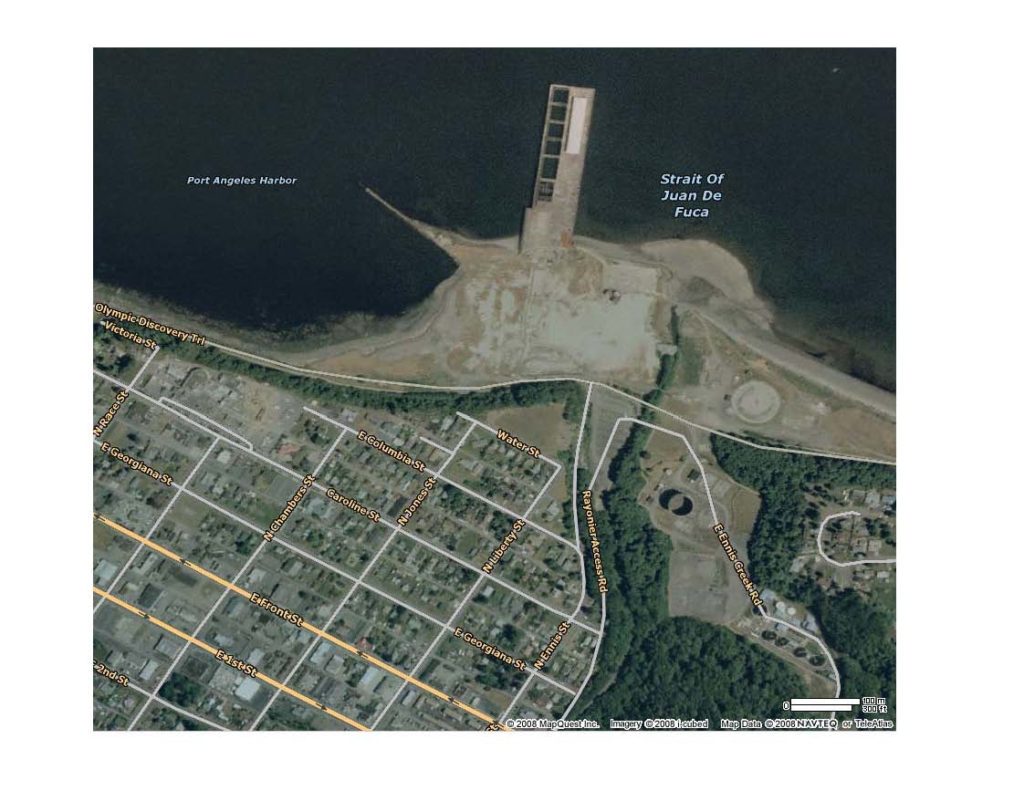The Story Behind the PDN’s 2-26-17 Story on Rayonier Inc. & Its Toxic Waste Cleanup
 Todays Peninsula Daily News ran this story: http://www.peninsuladailynews.com/news/rayonier-20-year-anniversary-sees-site-still-dormant-with-2026-as-cleanup-target/
Todays Peninsula Daily News ran this story: http://www.peninsuladailynews.com/news/rayonier-20-year-anniversary-sees-site-still-dormant-with-2026-as-cleanup-target/
20 years and still waiting! What the reporter did not include (see link above to the PDN story of Rayonier’s Port Angeles Mill closure 20 years ago) is the background of the citizens actions to ensure Rayonier did not leave Port Angeles its toxic waste, as was done when, in 1994, it closed its Hoquiam plant, and was done by another corporation in Bellingham.
From 1988-1996
Clean Air Now (CAN) formed trying to get agencies to force Rayonier and the other mills in Port Angeles to cleanup its air emissions. CAN was one of the first Ecology Public Participation Grant (PPG) recipients, and with those funds set up a call in HELP line from those feeling impacted by the air emissions. CAN was handed over to retired Barbara and Dr. Richard Osborne, who for 5 years continued the call in line and daily filmed the air stack emissions of all the mill plants and matched them to the calls. After 5 yeas and 3000 calls, they mapped where the calls came from to show denseness of the impacts over which parts of town.
Late 1996 and Beyond
When, In late 1996, Rayonier announced it was closing its Pt Angeles Mill, the Olympic Environmental Council with the help of WA Toxics Coalition (WTC) formed a western WA environmental coalition of 14 organizations (including WTC, Puget Soundkeepers Alliance, WAshPIRG, WEC, Sierra Club, Protect Peninsula’s Future, People for Puget Sound, and others) and local citizens. The USEPA National Ombudsman, based in D.C., agreed to take on the case, which prompted Region 10 to meet with the Coalition and get involved. In early 1997, Region 10 agreed to do a full investigation of where we asked them to. This included the Port Angeles Harbor, the mill site, town soils and eastward, and 3 landfills Rayonier owned or used. Two landfills and the mill area ranked for Superfund Priority list. (Politics, again, kept the 3rd from a full investigation and listing.)
Denial and politics stepped in from Rayonier’s local friends, including the City of Port Angeles, EDC, Port of Port Angeles, Chamber, etc. and traveled up the political chain to Representative Lynn Kessler, the Director of Ecology-Tom Fitzsimmons, and Governor Locke and then to Senator Murray and Congressman Norm Dicks who, in turn, leaned on EPA to hand over the cleanup to the Ecology Division that oversaw Rayonier and allowed the pollution. (They understood each other.)
It took the environmentalists and tribal concerns 7 years to have the cleanup handed over to Ecology’s Toxics Cleanup division, which should have had cleanup oversight from the beginning. It took the environmental coalition to press Ecology to set a dioxin soil cleanup level for children. Throughout, until a few years ago, Rayonier fought Ecology every step of the way. With a change in corporate staff in Jacksonville FL a few years ago, Rayonier began to cooperate.
Early in the 2000s, Dr. Eloise Kailin worked with WA State Dept of Health and created the statistics of deaths from 1990-1997 in subcensus tracts from the then Daishowa Paper Mill on Ediz Hook to east of the Rayonier Mill. Findings overlapped with those of the Osborne’s call in map. In 2008, Ecology released its own findings of the levels of dioxins in soils in and around the City of Port Angeles. It coincided with the Osborne-Kailin maps. Citizen science and agency science backed up one another.
It is always interesting to hear the City of Port Angeles, the economic development agencies and the business community gripe, but never admit their parts in caring more about Rayonier than the health of the community and the environment. And almost none of them show up to community presentations Ecology hosts or the PPG recipient Olympic Environmental Council hosts to bring the community up to speed.
PS: As to “HarborWorks,” the citizens did not want it or their $1.5M spent on it. HarborWorks was a backroom deal, as the agency and state records showed. Again, the City, Port and business community wasting resources. Shirley Nixon, Norma Turner and I started a citizen petition which other citizens readily took. We collected 800 signatures within two weeks and turned them over to Ecology who took note of the community’s sentiment, which coincided with Rayonier’s decision not to deal with HarborWorks.
It is hoped that we can see this area restored to its once natural beauty of a clean beach, a natural flood plain, a restored Ennis Creek, and where nature and humans can once again safely use.
—Darlene Schanfald
